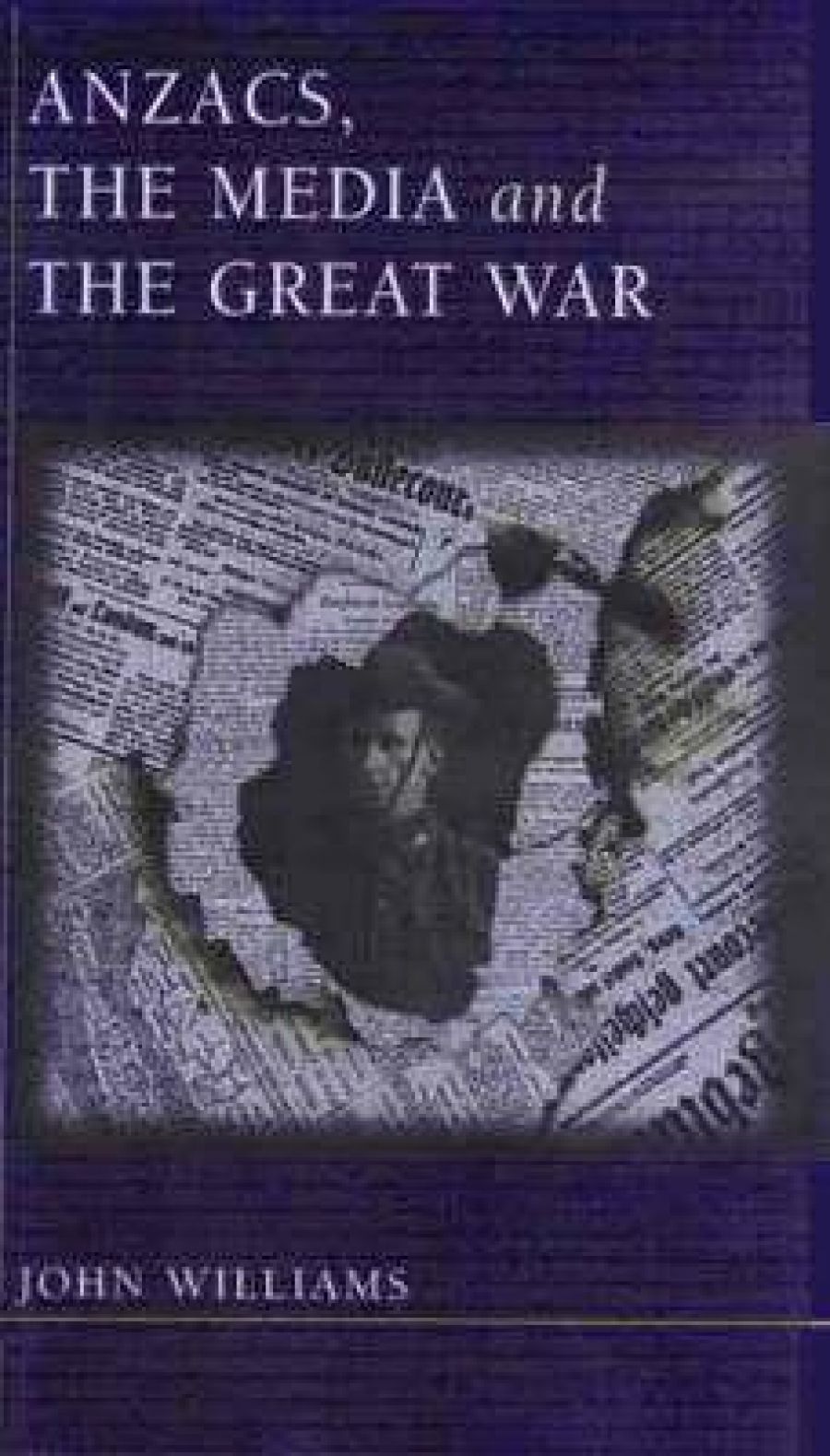
- Free Article: No
- Contents Category: Australian History
- Review Article: Yes
- Online Only: No
- Custom Highlight Text:
The myth and reality of the Anzac legend has proven a perennial subject of inquiry and argument for over thirty years now, since the publication of Ken Inglis’s justly famous articles in Meanjin and elsewhere in 1964–65. These prompted a spirited exchange with the late Geoff Serle and others. More recently, John Robertson examined the Gallipoli campaign in terms of the myth (1990), and found the critics of Australian martial performance wanting, while Eric Andrews took the Anglo-Australian relationship between 1914 and 1918 to task (1993), and found duplicity and manipulation in the construction of the Australians’ image.
- Book 1 Title: Anzacs, the Media and the Great War
- Book 1 Biblio: UNSW Press, $35.00 pb, 288 pp
John Williams has built on this earlier work, sometimes explicitly as with Andrews’ book, while proceeding in a number of different directions. His book is mistitled to some extent, because it provides an analysis of newspapers from both sides in the war but has little or nothing to say about other media such as film (although he does discuss a few of the photographs published in the illustrated papers). Within that context, the accounts of the various armies and the battles and offensives they engaged in are analysed through the reportage provided by the popular and ‘serious’ press in Britain, Australia, France, and Germany. We even get some sense of the Turkish perspective on Gallipoli, as reflected in the German use of Turkish press releases. Finally, along the way, Williams also focuses on C.E.W. Bean as a journalist and examines both what he filed from Egypt, Gallipoli, and the Western Front and how it was utilised (or not) by the British and Australian press.
This last is an especially useful service, because analyses of Bean tend to focus overwhelmingly on his role as official historian after the war, and although various commentators (this one included) have drawn attention to his journalistic credentials, we have generally not scrutinized his journalism. Whatever the claims for the originality of his conception of ‘democratic’ history later, Williams shows that his journalism often conformed in style and content to the expectations of the readers and editors for whom he wrote, and that on occasions he was as prepared as the next correspondent to mislead with a positive ‘spin’. If he was more sober in his reporting than many of those around him, he was by no means a journalistic gadfly.
In looking at the ways in which the press on either side reported the same events Williams finds, not altogether surprisingly, that much of what was printed was arrant nonsense driven by the needs of propaganda. In doing so he draws to our attention again the disparity between the war which soldiers experience and that which the home front perceives. John Terraine made this point many years ago concerning Britain, and Gerald Linderman has done the same for the American Civil War. Williams has done so here for combatant populations on both sides of the Great War, and the wide use of materials in languages other than English in this regard is welcome.
Although his analysis of the press in this manner is generally sound, his grasp of the detail of the wider war leads him into error in places – this reader gets the sense that his grasp of the war is not always as sure as it should be. Some of the errors are minor: the Sir Charles Monro (not Monroe) who takes over from Hamilton at Gallipoli reappears later (correctly spelt) in command of the 1st Army in France without apparent awareness that this is the same man. The Oglander Aspinall on p. 274 is actually Brigadier General C.F. Aspinal-Oglander, and this is not such a minor error because he was both a senior staff officer on Gallipoli and, more importantly, the author of the two volume British official history of that campaign, about whose shaping of that history there has been some controversy. And his discussion of the opening of the Passchendaele offensive in 1917 is a little ambiguous. He rightly points to the heavy rain which derailed the offensive through most of August, but criticises the reporting of the opening days of the offensive and its success as ridiculously optimistic. But the gains on the first day, before the rain came down for a solid week, were impressive and the optimism which greeted them at GHQ and which was reflected in the press is surely understandable. Missing altogether is an analysis of reportage of the war in Sinai and Palestine, important since the contrast with the Western Front was frequently drawn after the war.
These caveats aside, this is a solid and useful analysis of the ways in which societies are led to think about a war. The reactions when they discover they have been misled form the subject of another study.


Comments powered by CComment